The arrival of the Steelcase Karman has created quite a buzz, but the big question remains: does it have what it takes to compete with the big players like the Aeron, Zody, and Fern? High-end ergonomic chairs have the ability to flex with you as you move around, but there is a dilemma–mesh chairs don’t mix with flexible frames and many people love mesh chairs. The Karman might just be a solution.
Full Disclaimer: We are an office furniture dealer and sell some of the products we review. To learn more about the products we sell, our review process and why you can trust us, please visit: Why we’re different. Who is BTOD.com and The Breakroom Blog?
Steelcase Karman Office Chair Review Links
- A Truly Flexible Seat Frame
- Next Level Seating Comfort
- Explore the Comfort Dial for Reclining
- Disappointing Chair Arms
- Superior Build Quality
1. A Truly Flexible Seat Frame
To start off, The Steelcase Karman is a game changer in mesh seating because it offers both a flexible seat frame and backrest frame. With a price tag of about $1,070 it stands out, coming in much cheaper than other high-end mesh chairs with similar features. While it may seem unfair to make comparisons to chairs like the Aeron, Fern, or Zody, Steelcase confidently markets the Karman to be more comfortable than leading mesh chairs.
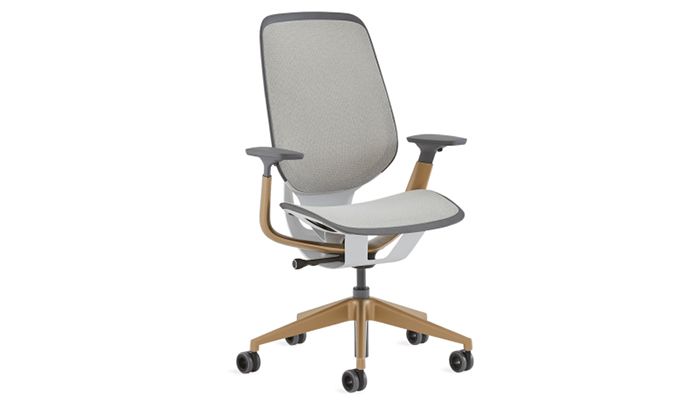
2025 Price: $1072.00 Where to buy: Steelcase.com
In terms of comfort, the Karman chair stands tall. Steelcase proudly advertises that the Karman adapts automatically to your body as you sit and change postures in every direction. While making these transitions, you’ll experience great flexibility as you shift your weight from side to side in the chair and lean forward into the seat. The seat frame is fairly firm, but still allows for some movement.
However, the real flexibility shines in the backrest which is similar to the Haworth Fern. When you combine the frame flexibility with the weight-activated mechanism, reclining in the chair feels very natural. It may not have the ultra-smooth recline of an Aeron, but the Karman succeeds in promoting movement. The backrest of the Karman takes comfort to a whole new level featuring what Steelcase calls “live back technology.” This feature offers support for your weight and gives you that cradled feeling, similar to the Gesture’s backrest.
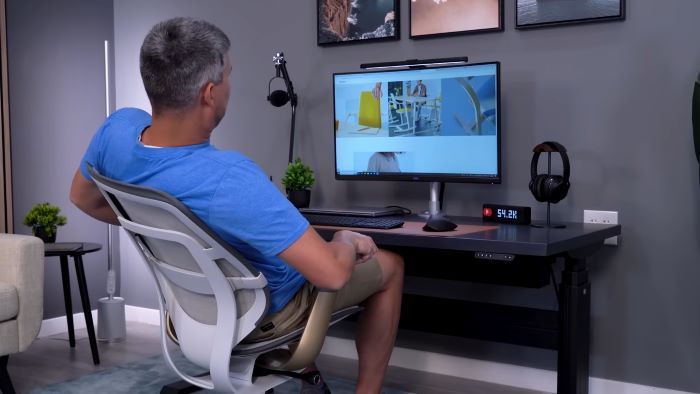
The mesh backrest of the Karman gives a suspended feeling, evenly distributing your weight across your entire back. The upper part of the backrest flexes when you lean your shoulders back against the frame, providing comfort even if you’re not sitting perfectly center in the chair. This is a feature that sets the Karman apart from most other mesh back chairs. The built-in lumbar support in the frame’s design proves to be sufficient meaning any additional lumbar support is not necessary. In fact, the chair looks nicer without it.
2. Next Level Seating Comfort
According to the Steelcase’s website, the design team focused on perfecting the seat to make it as comfortable as possible. The Karman is changing the mesh seat standard by adding a pad under the suspended mesh. During my first week of using the chair, I noticed that after about two to three hours, I was ready for a change. This is common for any chair, and I discovered that taking breaks to walk around or standing at my desk provided the necessary relief I needed to continue sitting in the Karman. Shifting into different sitting positions also helped me stay in the chair longer.
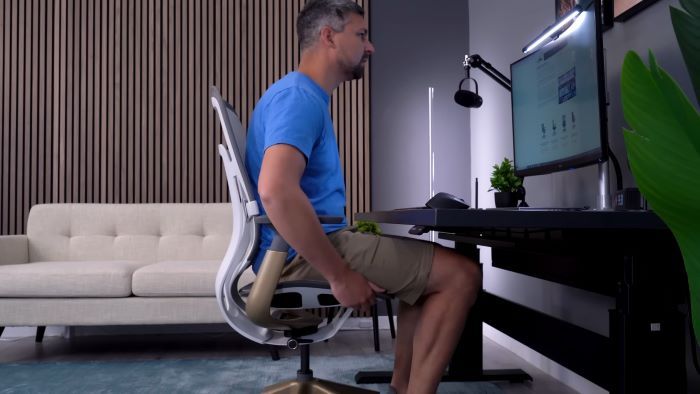
While the Karman flexes with you as you recline and shift your weight, it may not be the best choice for those who enjoy sitting cross-legged or with one leg tucked under the other. Despite any misleading information in Steelcase’s marketing, this seating style isn’t comfortable when using the Karman. The hard edge of the seat frame can be felt on your leg in this position. If you prefer sitting this way, it’s better to consider a cushioned seat.

One downside of the Karman is its seat depth adjustment. As someone standing 6 foot 2, I don’t love how much of my legs hang off the front edge of the seat. It’s not necessarily painful, but it does create additional pressure on my sitting bones. This chair’s ideal fit range seems to fall between 5 foot 2 and 5 foot 10. Even Ryan, who is 5 foot 9, felt that he could use a bit more seat depth. Steelcase claims that the seat’s design simulates greater seat depth. However, I found the seat to be too small and too rigid for my liking.
3. Explore the Comfort Dial for Reclining
Furthermore, the Karman chair features a comfort dial with four different reclining options. These options include weight-activated full recline, an attention boost mode with approximately 20% extra resistance, a mid-stop recline with the 20% boost, and an upright lock. Personally, I have specific preferences when it comes to recline tension. I like to find that perfect mid-recline position to work.

The Karman feels just right when set to the 20% boost setting. This is a significant improvement over the Steelcase Think chair, where the recline tension was never strong enough for me. My wife also appreciated that she could recline in the chair without the need for any major adjustments. The intuitive and responsive design of the Karman is evident in the comfort dial.
4. Disappointing Chair Arms
Unfortunately, the arms on the Karman are a bit of a disappointment. While Steelcase chairs are known for their excellent arms, the Karman falls short in this area. The arms work well for general tasking in terms of adjustment and comfort, but they are not great for relaxing or using a device. The pads are too firm, reminiscent of arm pads from budget chairs. Additionally, it’s easy to get pinched if you happen to fidget with the arms too much, which can be a serious concern for some users. Nevertheless, the arms do maintain a snug fit and stay in place without much play.
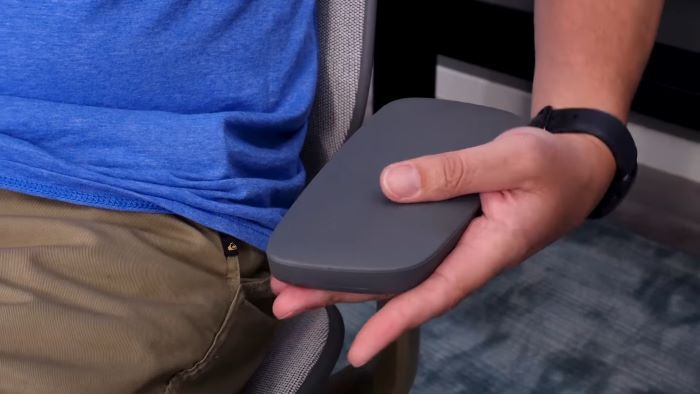
5. Superior Build Quality
Lastly, the build quality of the Karman is excellent. The materials are well-made, and everything fits together seamlessly. The opaque mesh fabric of the Karman is soft and displays exceptional craftsmanship. According to Steelcase, whether you choose the mesh or opaque fabric, the experience will be the same, with the fabric feeling slightly softer. The chair’s design is well thought out, with every element specifically made to be part of the Karman. The only exception is the additional lumbar support, which feels like an afterthought in terms of functionality and material quality.
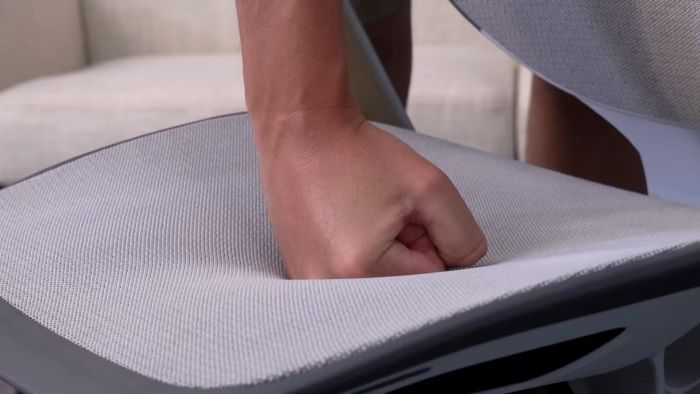
Bottom Line
Overall, the Karman is a worthy contender in the mesh chair market, offering a budget- friendly option in comparison to high-end models without compromising on comfort and flexibility. It brings a blend of stability and support, making it a suitable option for those who prefer mesh chairs. My initial impressions of the Karman are positive, and I like that it prioritizes comfort and encourages movement.





